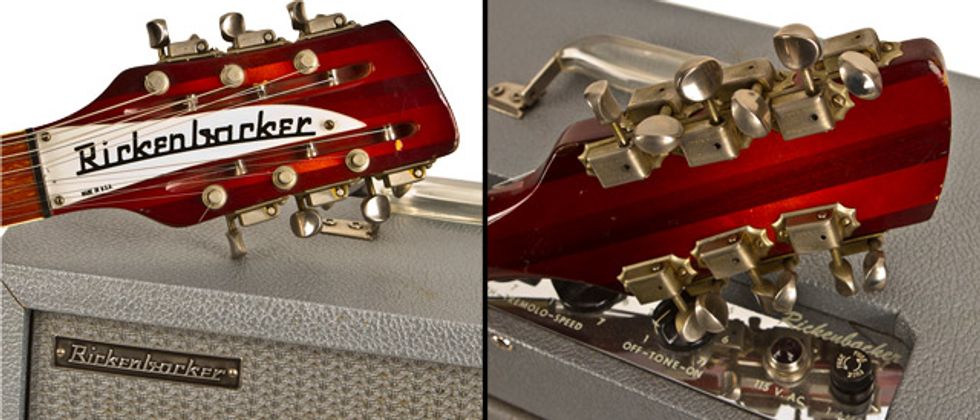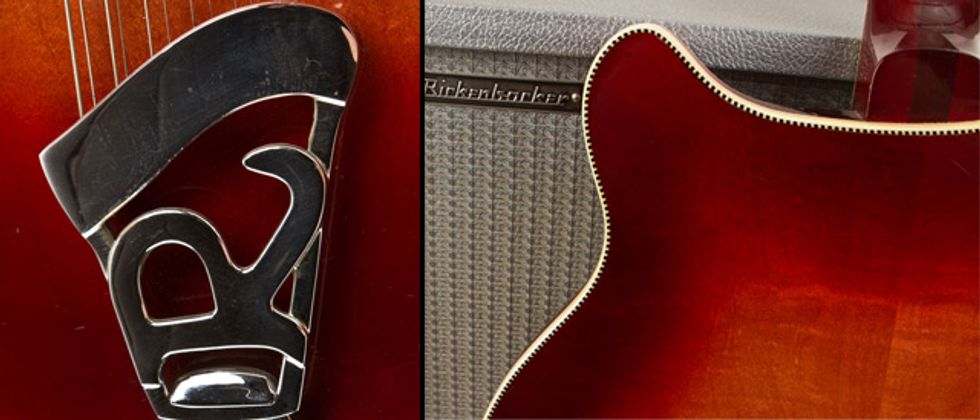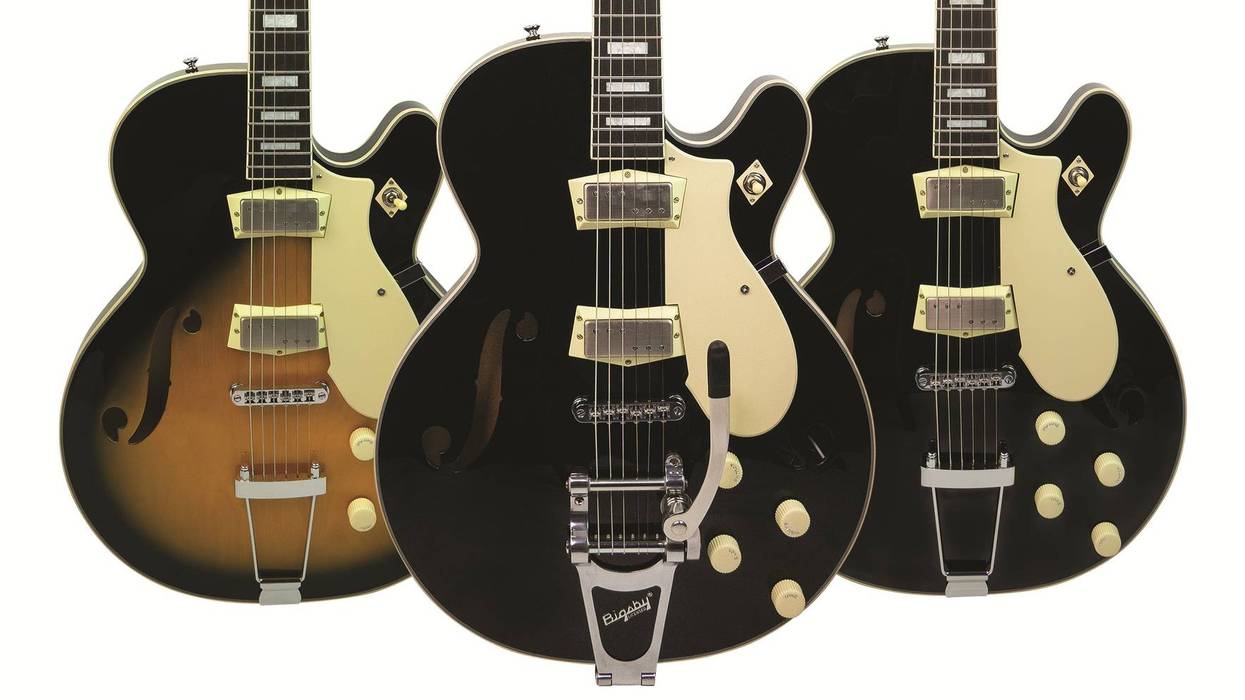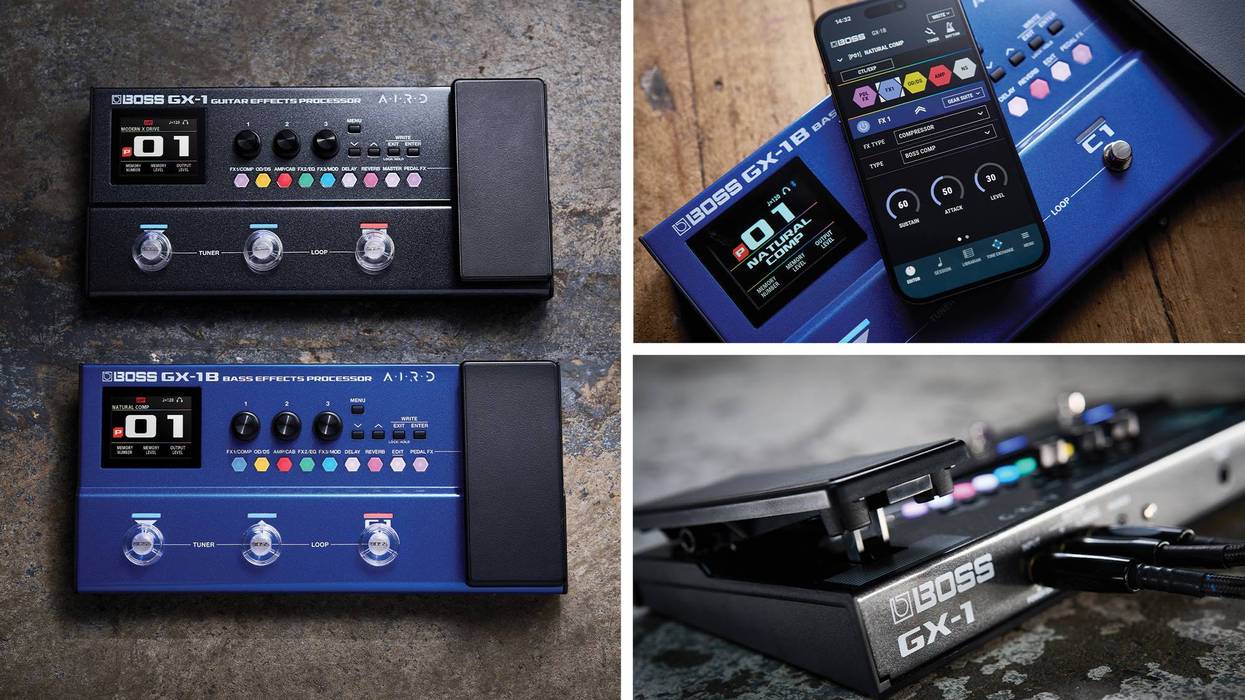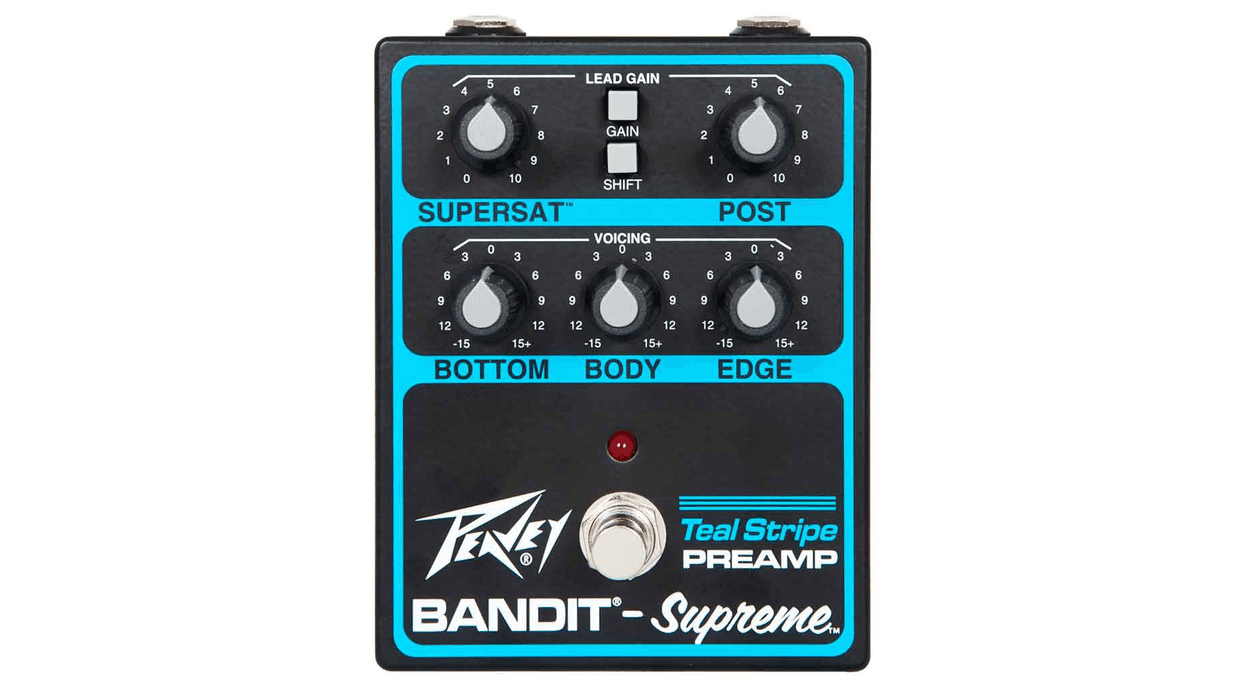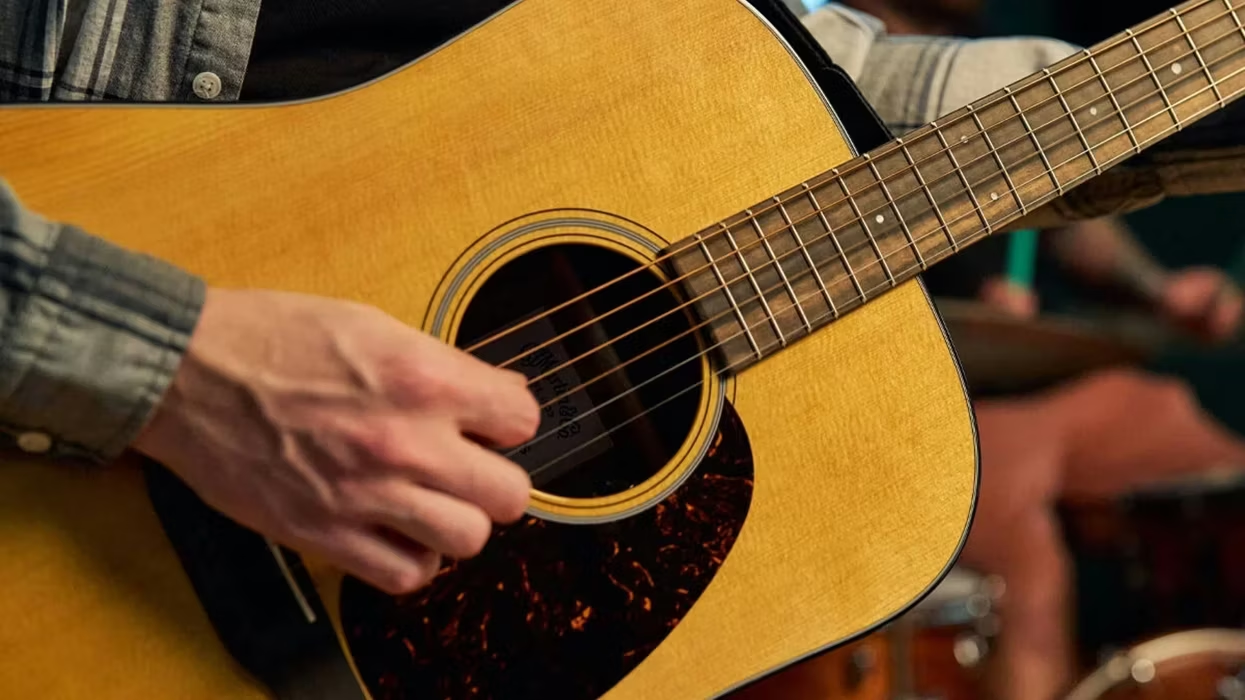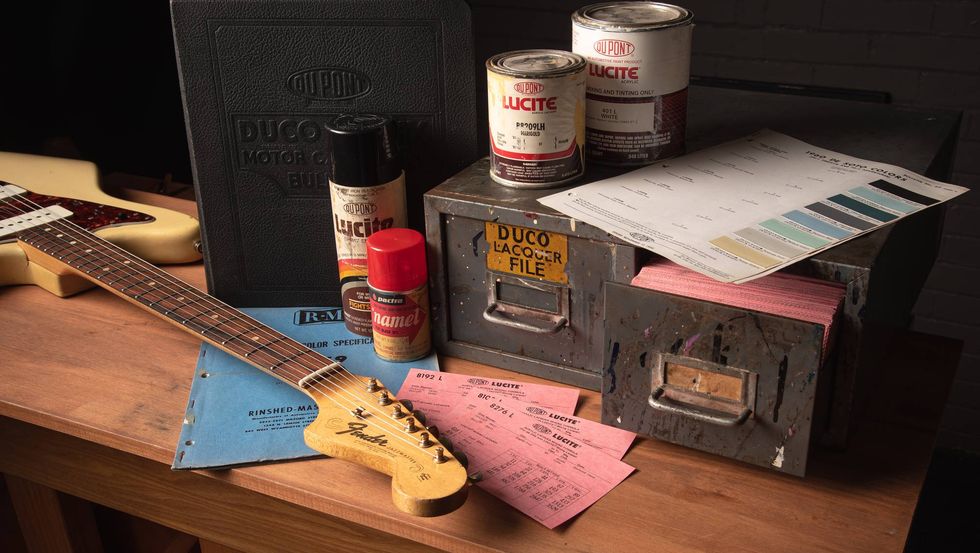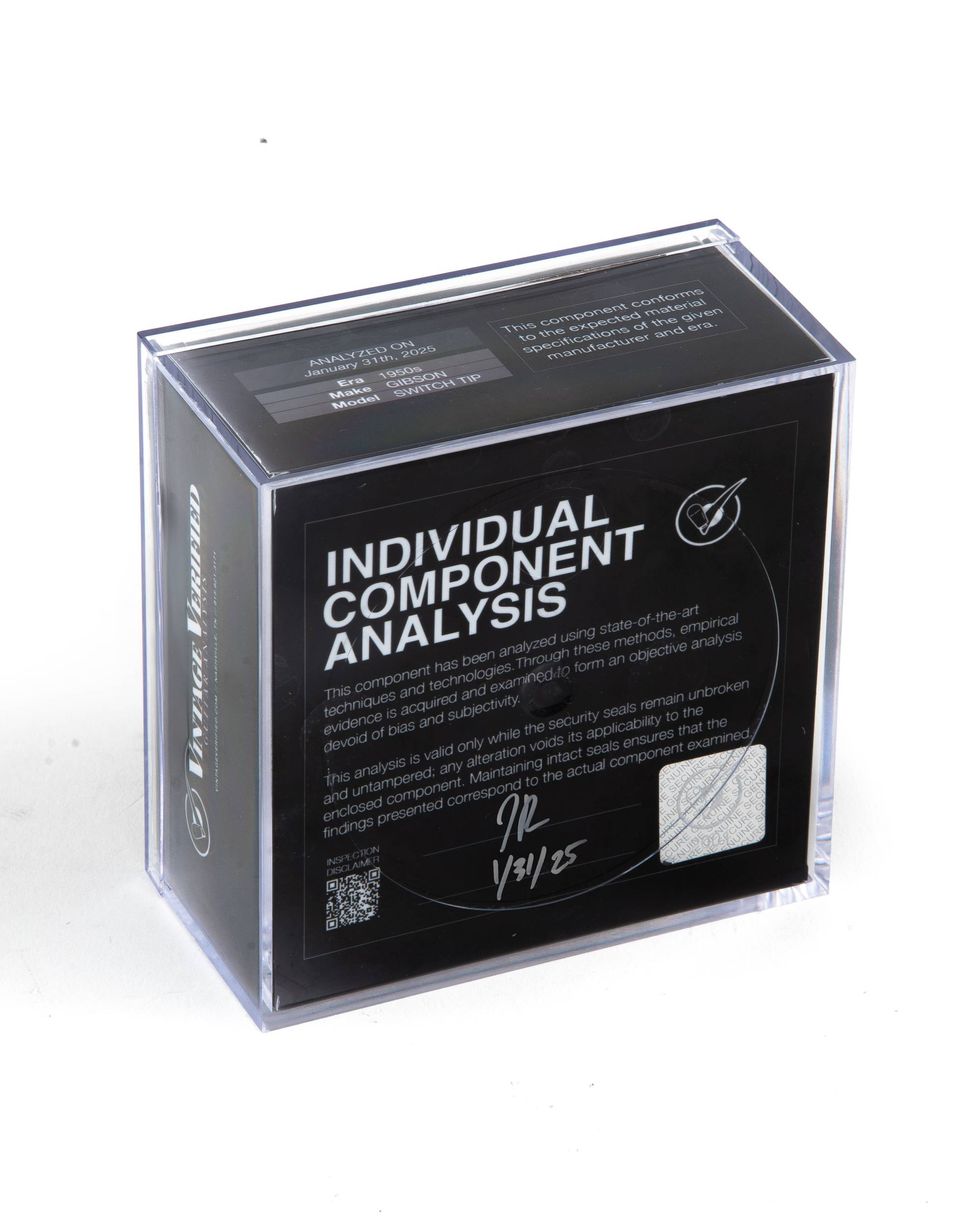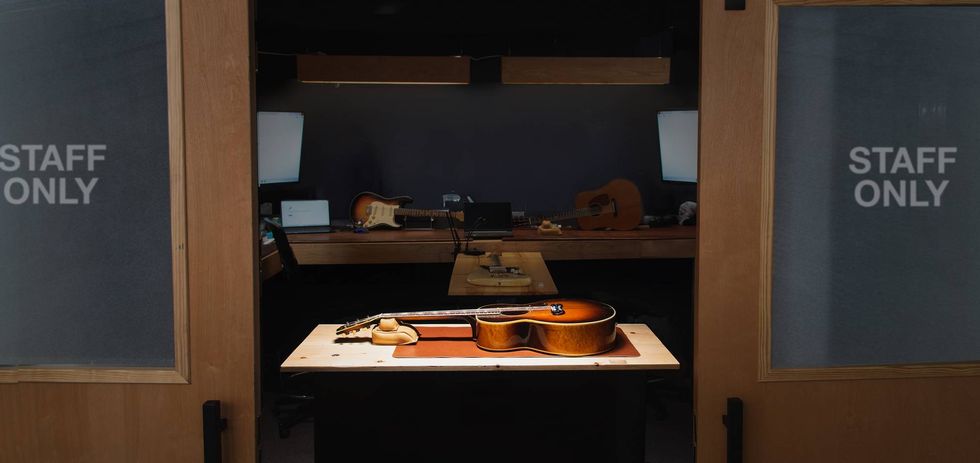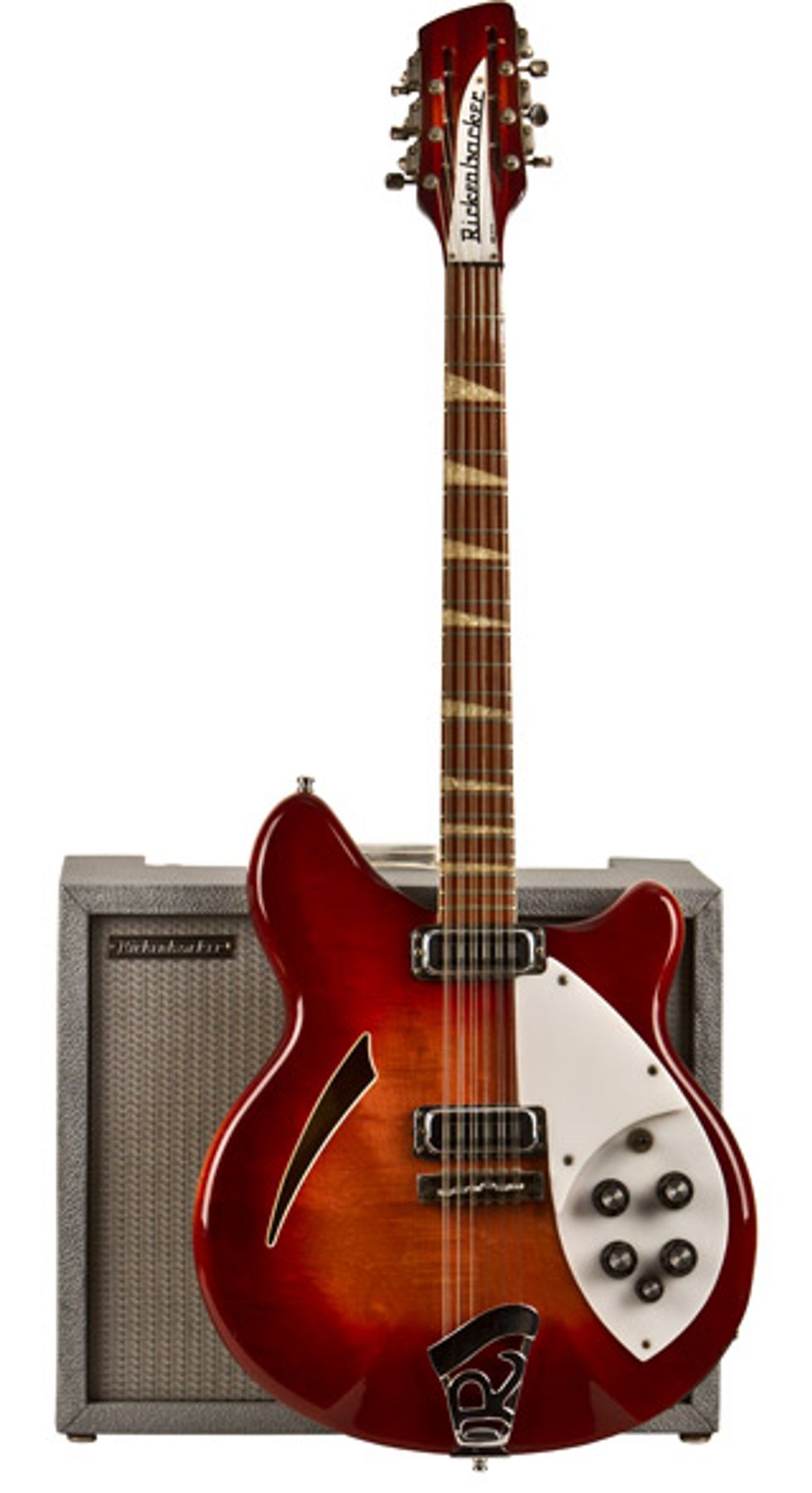
This stunning fireglo 1968 Rickenbacker 360/12 features a semi-hollow maple body with a single slash soundhole and a pair of “toaster” single-coils.
In the 1920s, Adolph Rickenbacker began a successful tool-and-die business in Los Angeles, and eventually his outfit began providing metal parts for various guitar companies, including National. Together with two former National employees—George Beauchamp and Paul Barth—Rickenbacker designed and marketed the first “Frying Pan” electrified lap-steel guitar.
F.C. Hall, owner of Radio & Television Equipment Co. (Radio-Tel) purchased the Electro String Company from Adolph Rickenbacker in 1953. Hall revamped the business and focused on electric standard guitars, rather than steels. These electric guitars were slow sellers at first, but they continued to increase in popularity as the 1950s progressed. In early 1954, German guitar maker Roger Rossmeisl was hired, and his unique “old world” designs gave Rickenbacker guitars a distinctive look that continues today.
The folk music trend of the early ’60s and its reliance on flattop 12-string guitars inspired Rickenbacker to fashion an electric 12-string in 1963. Although other companies (notably Gibson and Danelectro) had made earlier attempts, the Rickenbacker 12-string electric became the most sought-after because of its association with George Harrison. (He received the second one made in early 1964.)
The 1968 360/12 pictured here has the features most often associated with classic Deluxe Rickenbacker models of the ’60s. These include a bound maple neck, gloss finished rosewood fretboard with large triangle- shaped inlays, two “toaster” single-coil pickups, a maple body with checkerboard binding on the back, a slash soundhole, and a distinctive “R” tailpiece.
Rickenbacker’s innovative tuner arrangement allows
for a smaller headstock and also reduces tuning confusion—tuners for the six standard strings are
mounted on the side of the headstock, while the tuners for the octave and doubled top strings are
mounted on the back. RIGHT: The rear-mounted tuners for the doubled top and octave strings.
This example has a deep, unfaded version of Rickenbacker’s most popular color—fireglo. The 1966 list price was $524.50. The current value for one in excellent all-original condition is $5,000.
The exact model name of the amp behind the guitar is unknown to us. It resembles the description in the 1957 Rickenbacker catalog of a Model M-11A. It is equipped with tremolo and a Jensen 12" speaker dating to 1968. The current value for the amp is $400.
LEFT: Rickenbacker’s distinctive tailpiece. RIGHT: The maple back sports checkerboard binding.
Sources for this article include Rickenbacker Electric 12-String: The Story of the Guitars, the Music, and the Great Players by Tony Bacon, Rickenbacker by Richard R. Smith, and The Rickenbacker Book: A Complete History of Rickenbacker Electric by Tony Bacon and Paul Day. If you’re into chimey 12-string sounds, you’ll enjoy exploring any of these well-researched, lavishly illustrated books.
Dave’s Guitar Shop
Dave Rogers’ collection is tended by Laun Braithwaite and Tim Mullally and is on display at:
Dave’s Guitar Shop
1227 Third Street South
La Crosse, WI 54601
davesguitar.com
Photos by Mullally and text by Braithwaite.


